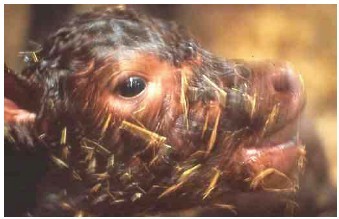
By Richard Randle, Nebraska Extension Beef Veterinarian
We all recognize that it’s crucial newborn calves get off to a good start and one of the most important things that needs to happen at birth is the adequate consumption of high-quality colostrum by the newborn calf. Ideally, we like to see vigorous calves stand and nurse within two hours of birth and repeatedly nurse by the time it’s 12 hours old. However, there are situations that could impact the quality and quantity of colostrum available to newborn calves. In these situations, colostrum replacement products may need to be considered. Such situations include:
DIFFICULT CALVING
Calves that experience difficult births often are slow to stand and nurse. Research has shown that calves born with no assistance stood and nursed within 40 minutes after birth and had a higher immunoglobulin concentration at 24 hours while calves that required assistance took more than an hour to stand and had a significantly lower immunoglobulin concentration.
SEVERE WEATHER CONDITIONS
Harsh winter weather conditions can cause cold stress. Calves that experience cold stress may be less likely to get up and nurse, cold-stressed cows also have reduced potential of providing high-quality colostrum.
THIN COWS
Nutrition plays a direct role in the production of colostrum. Undernourished cows may not have received enough energy, protein, minerals, and vitamins during the gestation period and, therefore, the ability to produce quality colostrum is reduced. As body condition decreases so does the amount and concentration of immunoglobulins in colostrum.
FIRST-CALF HEIFERS
Colostrum quality and quantity is usually lower in first-calf heifers. There is also a higher likelihood that first-calf heifers may lack good “mothering instinct” and will not allow the calf to immediately suckle – or may reject the calf altogether.
There are a number of colostrum replacement products commercially available today. Care should be taken in selection of the product to ensure you are getting a replacement and not a supplement. Although similar, replacements have higher concentrations of immunoglobulins(Ig), specifically IgG, than supplements and are intended to serve as the sole source when fresh colostrum is not available. There are other nutrients such as sugars, fats, vitamins, and minerals in replacements, but there can be variability in the quality and digestibility of products based on the source of these nutrients and the method of processing. Be sure to carefully read and follow the manufacturer’s instructions since products may vary in how they are mixed and the number of recommended feedings. You should consult your veterinarian to help you make a more informed purchasing decision for the colostrum replacement product that is suited best for your operation. This decision is an important one because you only get one chance to start a calf off right.
For more information on colostrum Dr.Randle’s “Care of the Newborn Calf: Colostrum Management Webinar” can be viewed at http://go.unl.edu/4eez. The BeefWatch article “Colostrum Helps Newborn Calves” http://go.unl.edu/cxa3 also provides further information.